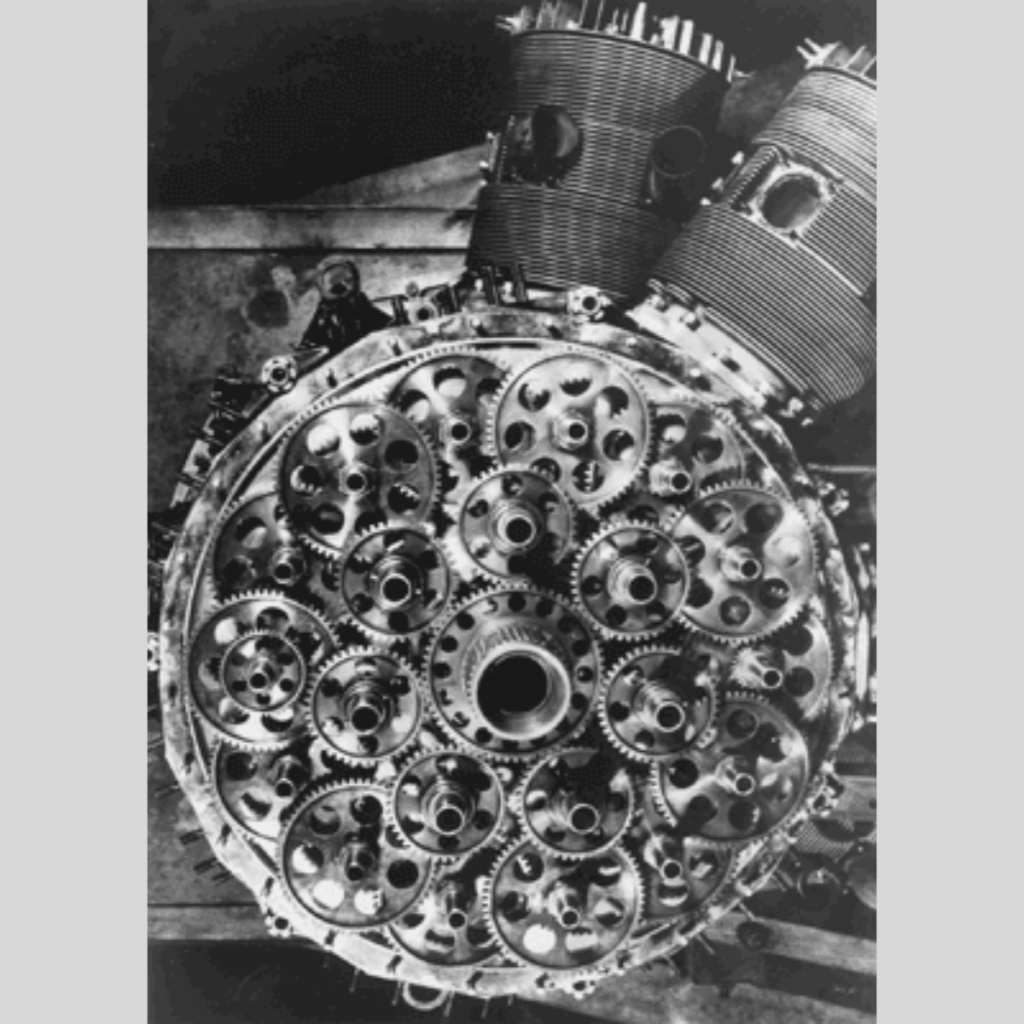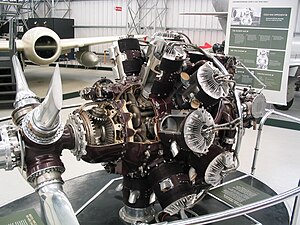
The Bristol Hercules is a 14-cylinder two-row radial aircraft engine designed by Sir Roy Fedden and produced by the Bristol Engine Company starting in 1939. It was the most numerous of their single sleeve valve (Burt-McCollum, or Argyll, type) designs, powering many aircraft in the mid-World War II timeframe.

The Hercules powered a number of aircraft types, including Bristol’s own Beaufighter heavy fighter design, although it was more commonly used on bombers. The Hercules also saw use in civilian designs, culminating in the 735 and 737 engines for such as the Handley Page Hastings C1 and C3 and Bristol Freighter. The design was also licensed for production in France by SNECMA.
Design and development
Shortly after the end of World War I, the Shell company, Asiatic Petroleum, commissioned Harry Ricardo to investigate problems of fuel and engines. His book was published in 1923 as “The Internal Combustion Engine”. Ricardo postulated that the days of the poppet valve were numbered and that a sleeve valve alternative should be pursued.
The rationale behind the single sleeve valve design was two-fold: to provide optimum intake and exhaust gas flow in a two-row radial engine, improving its volumetric efficiency and to allow higher compression ratios, thus improving its thermal efficiency. The arrangement of the cylinders in two-row radials made it very difficult to utilise four valves per cylinder, consequently all non-sleeve valve two- and four-row radials were limited to the less efficient two-valve configuration. Also, as combustion chambers of sleeve-valve engines are uncluttered by valves, especially hot exhaust valves, so being comparatively smooth they allow engines to work with lower octane number fuels using the same compression ratio. Conversely, the same octane number fuel may be utilised while employing a higher compression ratio, or supercharger pressure, thus attaining either higher economy or power output. The downside was the difficulty in maintaining sufficient cylinder and sleeve lubrication.
Manufacturing was also a major problem. Sleeve valve engines, even the mono valve Fedden had elected to use, were extremely difficult to make. Fedden had experimented with sleeve valves in an inverted V-12 as early as 1927 but did not pursue that engine any further. Reverting to nine cylinder engines, Bristol had developed a sleeve valve engine that would actually work by 1934, introducing their first sleeve-valve designs in the 750 horsepower (560 kilowatts) class Perseus and the 500 hp (370 kW) class Aquila that they intended to supply throughout the 1930s. Aircraft development in the era was so rapid that both engines quickly ended up at the low-power end of the military market and, in order to deliver larger engines, Bristol developed 14-cylinder versions of both. The Perseus evolved into the Hercules, and the Aquila into the Taurus.
These smooth-running engines were largely hand-built, which was incompatible with the needs of wartime production. At that time, the tolerances were simply not sufficiently accurate to ensure the mass production of reliable engines. Fedden drove his teams mercilessly, at both Bristol and its suppliers, and thousands of combinations of alloys and methods were tried before a process was discovered which used centrifugal casting to make the sleeves perfectly round. This final success arrived just before the start of the Second World War.

Cutaway Bristol Hercules engine at the National Museum of Flight, East Fortune, Scotland
In 1937 Bristol acquired a Northrop Model 8A-1, the export version of the A-17 attack bomber, and modified it as a testbed for the first Hercules engines.
In 1939 Bristol developed a modular engine installation for the Hercules, a so-called “power-egg”, allowing the complete engine and cowling to be fitted to any suitable aircraft.
A total of over 57,400 Hercules engines were built.